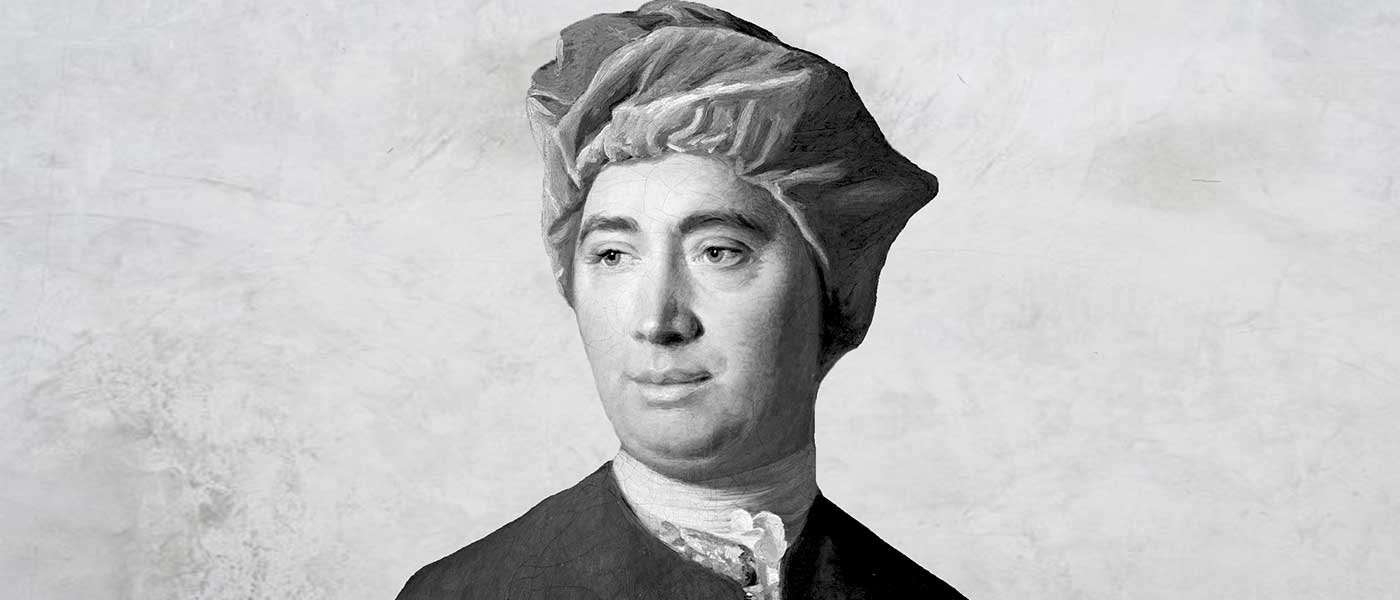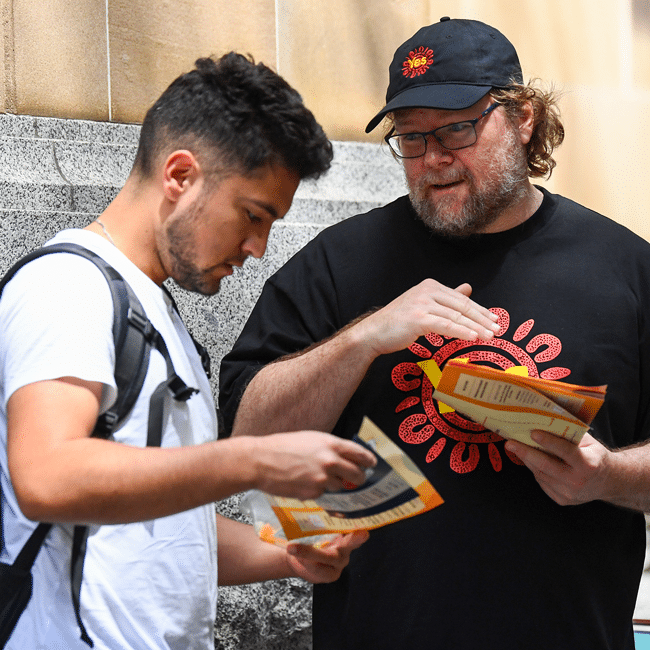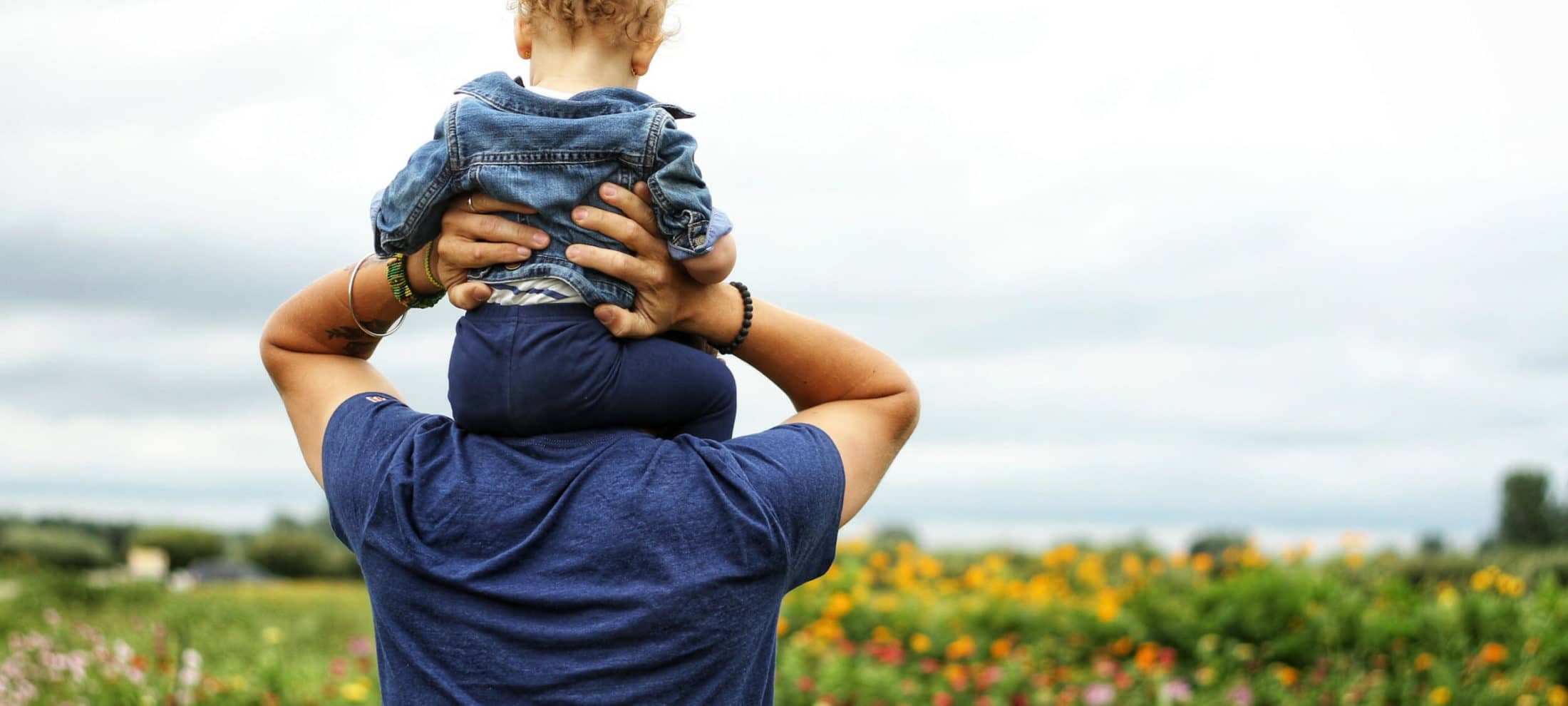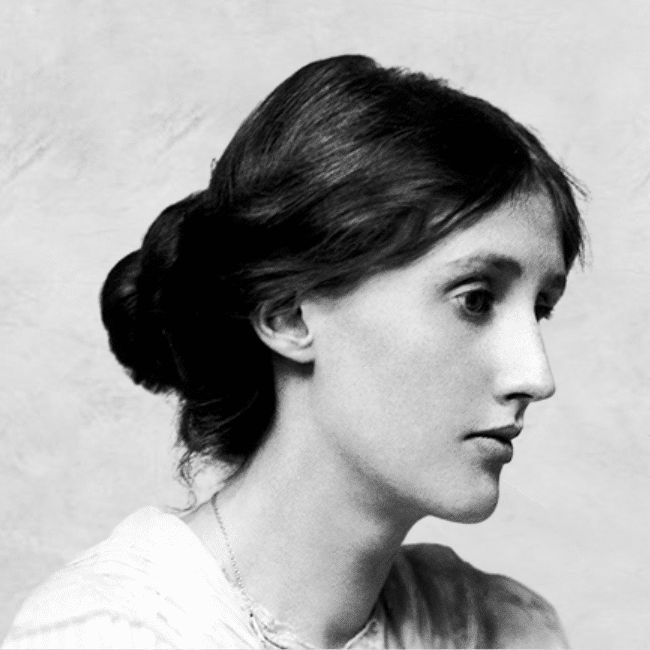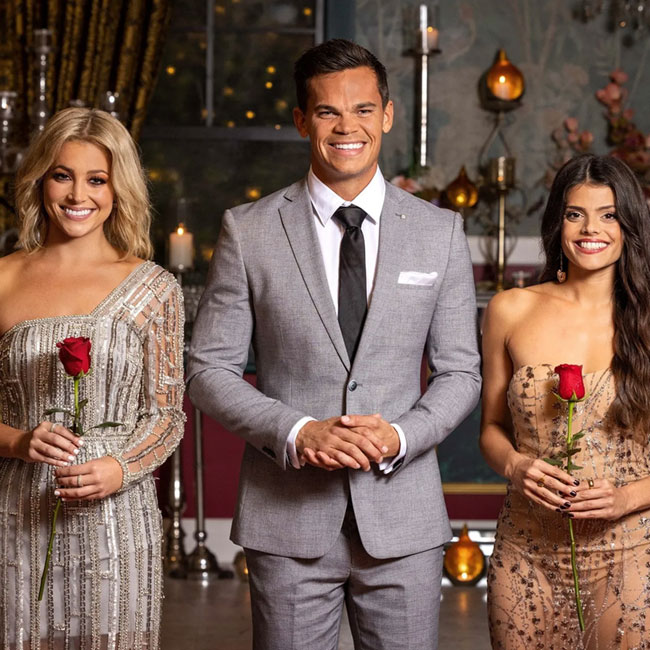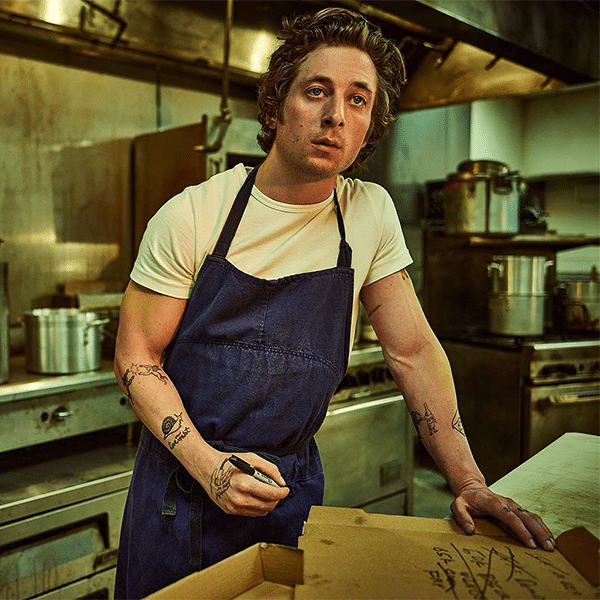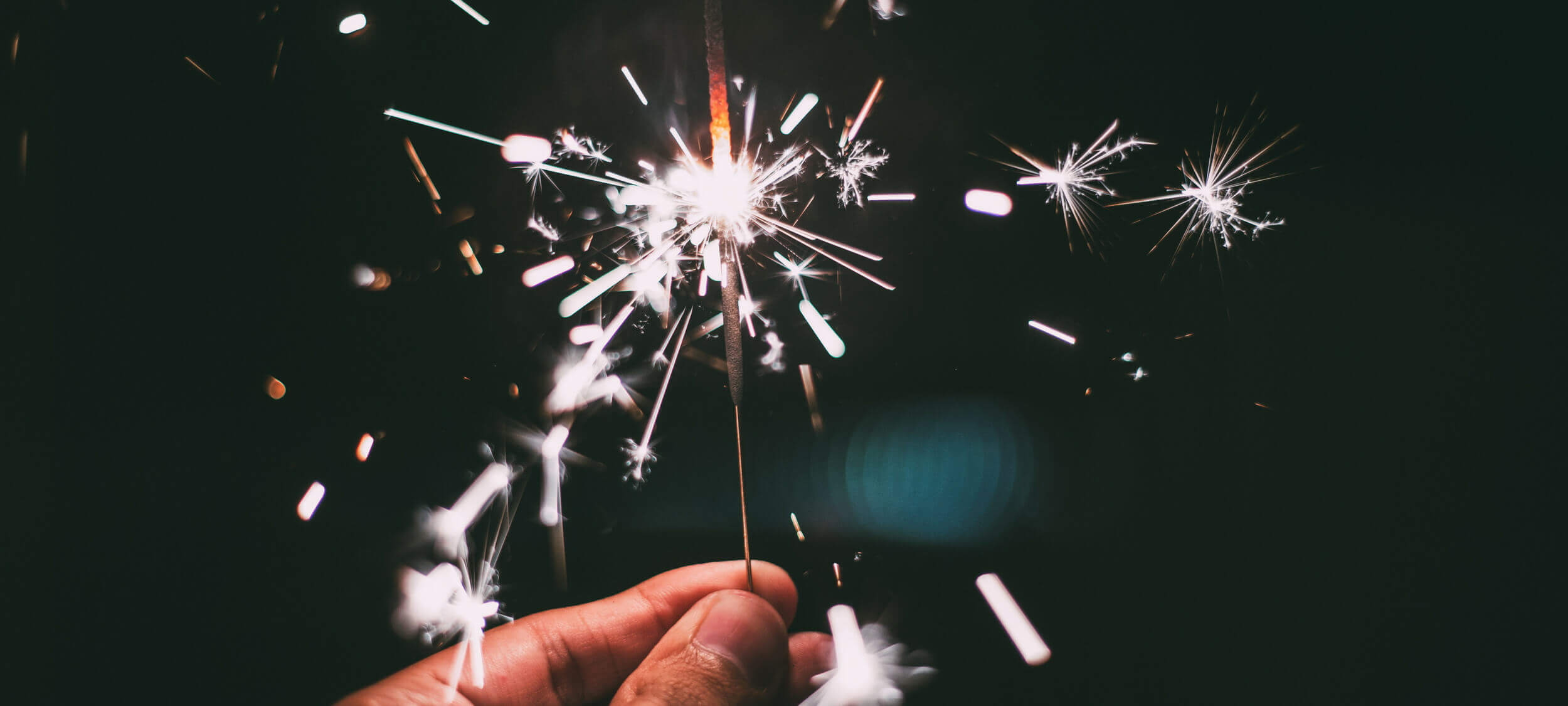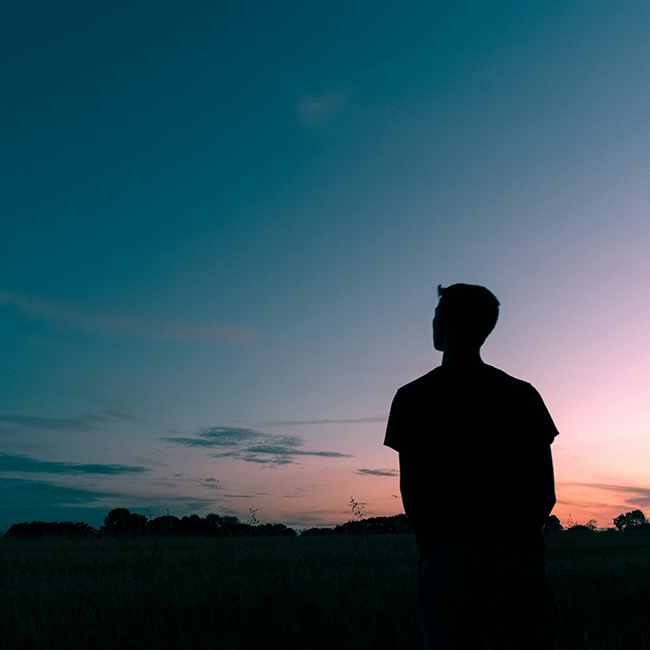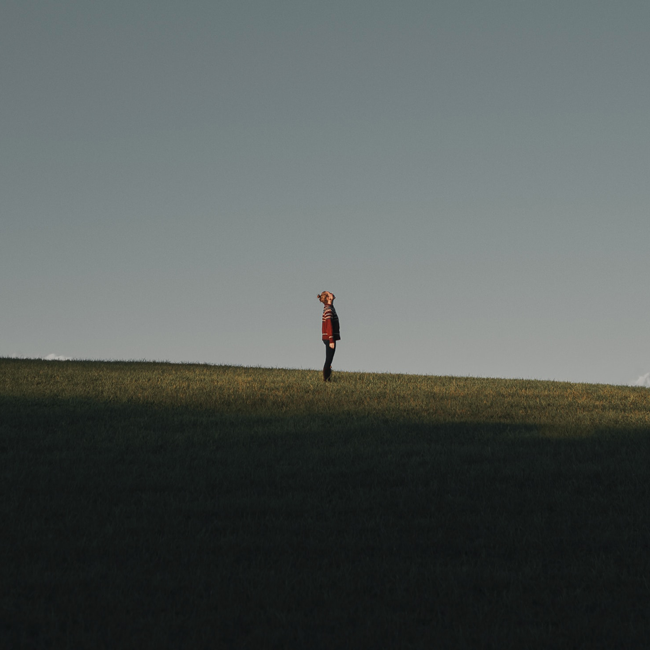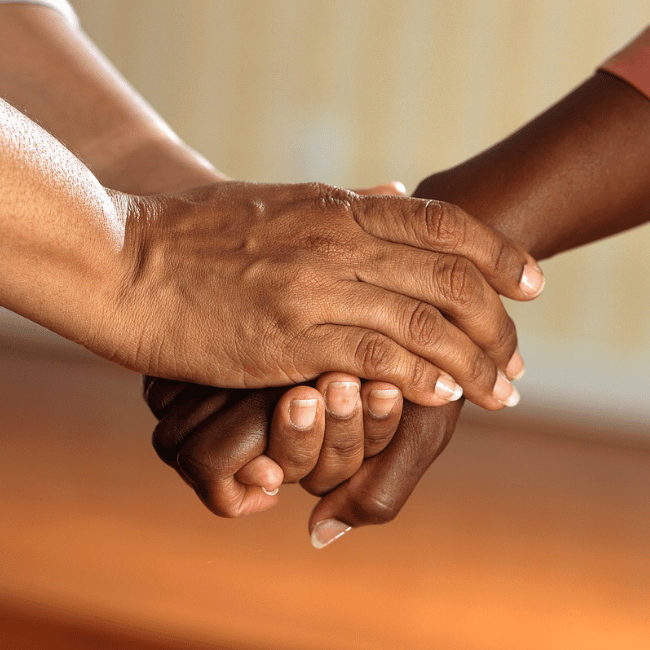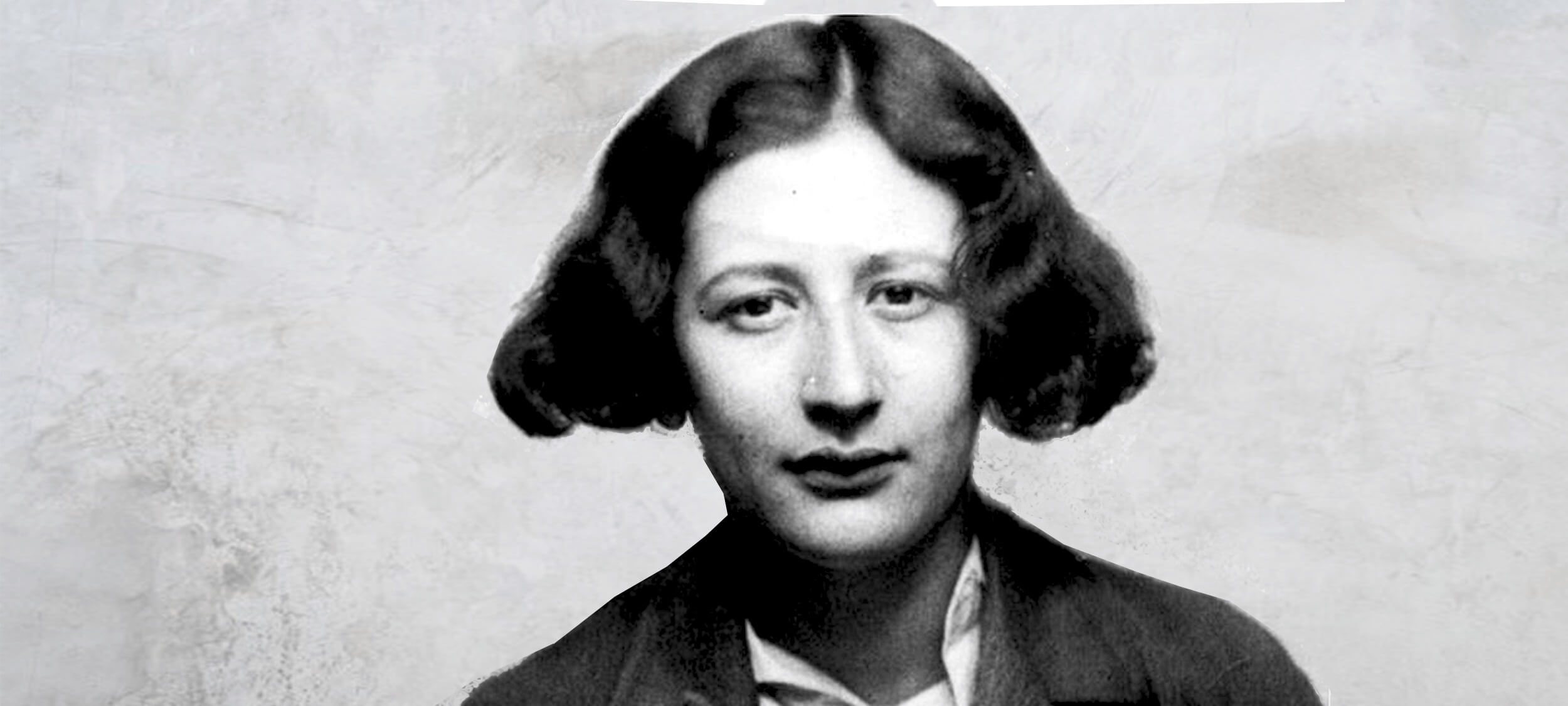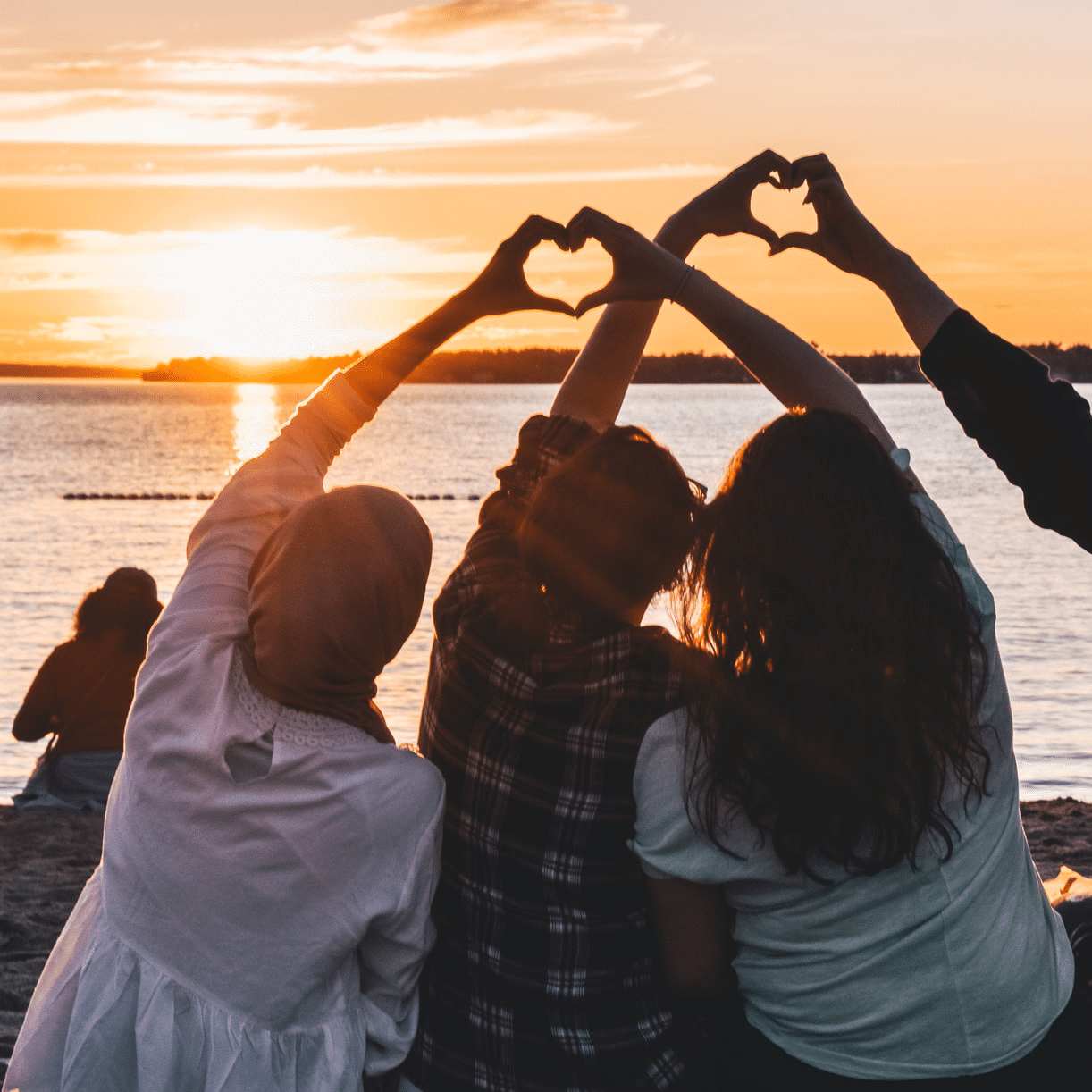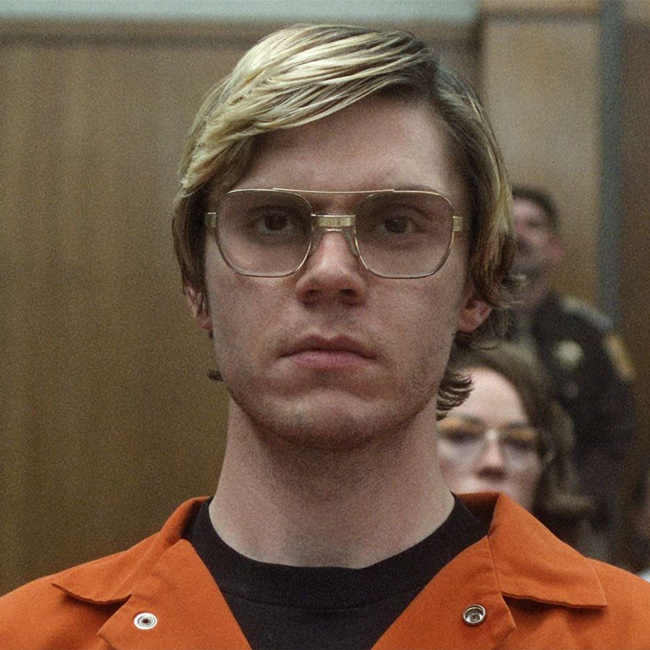Purpose, values, principles: An ethics framework
An ethics framework is a statement of an organisation’s purpose, values and principles.
It makes clear what they believe in and what standards they’ll uphold. It’s a roadmap to good decision making and, if it’s lived throughout the organisation. It’s also a guide to making an organisation the best version of itself.
Trying to make a decision without knowing your purpose, values and principles, is like being at sea without a rudder. They’ll be pushed around by the winds of our desires, mood, unconscious mind, group dynamics and social norms. The choices they make won’t really be their own.
Ethics in your inbox.
Get the latest inspiration, intelligence, events & more.
By signing up you agree to our privacy policy
You might be interested in…
Explainer
Relationships
Ethics Explainer: Stoicism
Opinion + Analysis
Business + Leadership, Health + Wellbeing, Relationships
Office flings and firings
Opinion + Analysis
Relationships, Society + Culture
Five dangerous ideas to ponder over the break
Opinion + Analysis
Relationships
When are secrets best kept?
BY The Ethics Centre
The Ethics Centre is a not-for-profit organisation developing innovative programs, services and experiences, designed to bring ethics to the centre of professional and personal life.
But how do you know? Hijack and the ethics of risk

But how do you know? Hijack and the ethics of risk
Opinion + AnalysisRelationshipsSociety + Culture
BY Joseph Earp 18 OCT 2023
Hijack, the new Idris Elba-starring miniseries, opens with every airline passenger’s nightmare – a bullet, found in the bathroom of a plane. Within moments, things go from bad to worse.
The ragtag group of heroes, a collection of passengers led by Sam Nelson (Elba), a corporate business negotiator, find themselves in the middle of a hijacking plot, surrounded by criminals, and unable to get help from those down on the ground who, we quickly learn, are ensnared in the plot themselves.
Such a format is not necessarily new – television and film have been littered with stories of hostile airline takeovers, from the big brash action of Air Force One, to the real-world horror of United 93, a tragic retelling of the 9/11 attacks. But what sets Hijack apart is its rapidly escalating sense of dread. Time and time again, Sam and his fellow passengers are faced with impossible decisions, and time and time again, they are foiled. That opening nightmarish feel only deepens – you know those dreams where everything goes wrong; where you are powerless; where the adversaries keep mounting? That’s key to Hijack’s tone, a story of ever-escalating horrors, through which Sam must try to keep himself – and his ethical code – alive.
Indeed, this mounting sense of risk means that Hijack poses an interesting question about ethical deliberation under fire. Sam, who is well-versed in negotiation, but not well-versed in negotiation where the stakes are so high, must repeatedly make rapid-fire decisions. Does he send a text to his wife? Does Sam continue his attempted revolt after he discovers that the hijackers know who his family are, and will kill them if anything goes wrong? Does Sam rush the cockpit? And how responsible will he ethically be if he fails? How much blood is on his hands?
Decision making turned up to 11
The problem of ethical decision-making under fire is essentially the problem of the difference between theory and practice. Sit people down and ask them what the right thing to do is, give them time, don’t hurry them, and psychological studies show that they’ll have a better chance of choosing the ethical answer.
In a famous experiment known as The Good Samaritan, a group of priests-in-training were told to head across a university campus to deliver a speech on the importance of helping others. Some of these priests were given ample time to make it across the campus; others were told they had to rush. Along their trip, the experimenters planted a person in need – an actor, who feigned being sick, and asked for help. The majority of those priests who had been told they weren’t in a rush stopped to help. But the priests who had to move fast, and were stressed and distracted, largely ignored the actor – even though they were literally on their way to give a speech on how to care for their fellow human beings.
The experiment shows that the more that pressure increases – particularly time pressure – the less likely we are to do the right thing. Which poses a significant problem for ethical training. How can you fight against the forces of a chaotic world?
Philosopher Iris Murdoch was aware of the everyday pressures that we meet constantly. For that reason, she considered ethical training a process which prepares us to act unthinkingly. The more we make the right decisions when we do have time, the more likely we are to shape our instincts to be more ethical, and therefore act virtuously when we don’t have time. In this way, Murdoch collapses theory into practice, treating them not as divorced from one another, but with theory informing practice.
Which is a view that Hijack supports. Sam’s cushy day job has given him an unusual set of skills that he himself didn’t even realise that he had. All that work he conducted for years? It was training for this moment.
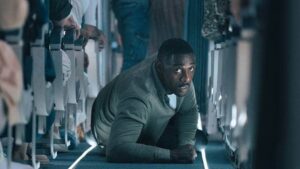
The ethics of risk
A related issue pertaining to theory and practice is the unknowability of the future. Thought experiments and ethical dilemmas conducted theoretically can have clear right or wrong answers, based on outcomes. But when we’re actually moving through the world, we’re blind to these outcomes. More often than not, we’re stumbling through the ethical world, making decisions based on the hope that things will work out, but never actually knowing if they will.
This is the ethics of risk, extensively covered by the philosopher Sven Ove Hansson. According to Hansson, “risk and uncertainty are such pervasive features of practical decision-making that it is difficult to find a decision in real life from which they are absent.”
Hansson’s solution to this problem is to consider “fair exchanges of risk.” He forgoes the idea that we will never be perfect moral creatures. Because the world is uncertain, we can only ever move towards good ethical actors. There’s no way that we can ever always do the right thing, and nor should we expect ourselves to. Instead, we must try. That is the important part.
So it goes in Hijack. Sam is a flawed main character, who frequently makes errors while trying to save those around him. But we, as audience members, forgive him for this. We don’t judge him for the plans that fail. We see his movement towards good behaviour, and that’s what matters.
In that way, we can also see theory and practice moved out of contention with each other. Theory is the goal; practice is the action. We’ll never live in a fully theoretic state. But what Hijack tells us, is in the face of that impossibility, we should not throw up our hands. We should instead keep moving towards theory – a spot on the horizon that is forever escaping us, but that we never stop chasing.
Ethics in your inbox.
Get the latest inspiration, intelligence, events & more.
By signing up you agree to our privacy policy
You might be interested in…
Opinion + Analysis
Relationships, Society + Culture
The #MeToo debate – recommended reads
Opinion + Analysis
Relationships
Five steps to help you through a difficult decision
Big thinker
Relationships
Big Thinker: David Hume
Opinion + Analysis
Society + Culture
Read before you think: 10 dangerous books for FODI22
BY Joseph Earp
Joseph Earp is a poet, journalist and philosophy student. He is currently undertaking his PhD at the University of Sydney, studying the work of David Hume.
Now is the time to talk about the Voice

The Yes campaign is failing. If nothing changes soon, then October 14 will see constitutional reform fail, setting back recognition and reconciliation by years, if not decades.
And no amount of impassioned speeches by politicians, mass rallies by the Yes faithful, uplifting advertisements or – dare I say – editorial columns are likely to shift the needle towards Yes.
This is because voters who are currently unsure or leaning towards No have tuned out the “official” platforms. Their trust in mainstream media outlets has collapsed to single digit figures. It’s not even that they’ve switched to social media. It turns out that the only ones who have their ear are friends, family and colleagues. In this age of mass cynicism and social media schisms, it’s good old-fashioned relationships that still matter.
So, if you believe in the Voice, as I do, if you believe it represents an opportunity for Australia to take meaningful steps towards reconciliation with First Nations peoples, and if you believe it could be a stepping stone to a more unified Australia that each of us can be proud of, then your time to act is now.
But how? The key is to leverage the power of relationships and dive into conversations with your friends and relatives, especially people over the age of 55, who are currently the most likely to vote No. That’s your parents and grandparents, aunts and uncles, or if you’re in that age group yourself, your childhood friends or neighbours.
If the prospect of starting a “political” conversation with family members fills you with dread, that’s understandable. These conversations often succumb to pitfalls that only increase animosity and polarisation. But get them right and they can be transformational. If you’re brave enough to strike up a conversation over the dinner table, here’s how to do so constructively. In fact, these tips can help you have better conversations regardless of how you intend to vote.
First: show respect. It’s all too easy (and, in some circles, encouraged) to believe that those who disagree with us must be either stupid or malicious. Sometimes they are. But signalling disrespect is a surefire way to kill any possibility of persuasion. Even the faintest whiff of disrespect triggers defensiveness, and when that happens, constructive conversation is over.
One way to show respect is to hold your tongue and listen – really listen. Often, people get belligerent because they don’t feel heard. That means two of the biggest tools in your arsenal are your ears. Just listening carefully, asking a few questions and repeating back a summary of what they have said can be transformative. It makes them feel heard and it gives you a fighting chance of understanding where they’re coming from.
Do this before you’ve shared your views. Our natural tendency when we hear someone say something we don’t agree with is to immediately open our mouths and tell them that we think differently. But this sets you at loggerheads from the outset. Instead, hold back. Hear them out and show you’re interested into getting to the bottom of the matter. That way it’s not a tug of war between the two of you but one where you’re on the same side pulling against ignorance.
While listening, you’re likely to hear them offer reasons to support their view. Some will be authentic, but many will be post-hoc rationalisations of deeper unstated motivations. You can spot a post-hoc rationalisation because when you show that it’s false, it doesn’t change their mind. That means it was never the real motivation for their beliefs, just a distraction.
The trick is not to challenge or fact check post-hoc rationalisations head-on but to change the way they perceive the issue in the first place. Once you’ve generated enough goodwill, offer an alternative perspective on the issue. You don’t need to encourage, let alone demand, they adopt your perspective, just offer it as your reason for voting the way you intend to.
You’re nearly done. If you’ve made it this far, you’ve done just about all anyone can do in a single conversation. Thank them and move on to something else. Let them mull over your perspective, and perhaps in the next conversation you might be able to go deeper. Minds rarely change in a single sitting.
Of course, there will be times when the conversation goes off the rails. Maybe your discipline cracks and you scoff at one of their remarks. Perhaps they refuse to engage in good faith. Maybe they just want to troll you to get a reaction. If any of these happen, back out. Focus instead on reinforcing the relationship based on other shared values – family, sport, food, whatever it is that brings you together – so perhaps in the next conversation they won’t feel the need to get defensive, or offensive.
Good conversations, particularly persuasive ones, take work. But it is possible to avoid the worst pitfalls and have a constructive discussion. If even a few unsure voters are swayed, it could shift the tide of the referendum. And given the Voice is about being heard, it’s rather fitting each of our voices could help make the difference.
An edited version of this article appears in The Sydney Morning Herald.
Image: AAP Image/Jono Searle
For everything you need to know about the Voice to Parliament visit here.
Ethics in your inbox.
Get the latest inspiration, intelligence, events & more.
By signing up you agree to our privacy policy
You might be interested in…
Opinion + Analysis
Relationships
Ozi Batla: Fatherhood is the hardest work I’ve ever done
Opinion + Analysis
Relationships
You don’t like your child’s fiancé. What do you do?
Opinion + Analysis
Relationships
Should we abolish the institution of marriage?
Opinion + Analysis
Relationships
TEC announced as 2018 finalist in Optus My Business Awards
BY Dr Tim Dean
Dr Tim Dean is Philosopher in Residence at The Ethics Centre and author of How We Became Human: And Why We Need to Change.
Would you kill one to save five? How ethical dilemmas strengthen our moral muscle

Would you kill one to save five? How ethical dilemmas strengthen our moral muscle
Opinion + AnalysisRelationships
BY The Ethics Centre 6 OCT 2023
Ethical dilemmas are, by their nature, uncomfortable or difficult to tackle, but they can also teach us a lot about our own values and principles and prepare us for an ethically complex world.
You’re about to take a major exam that will determine whether you get accepted into a potentially life-changing course. But you hear that there’s a leaked copy of the exam paper doing the rounds, and other students are studying it carefully. There are only a precious few spots available in your desired course, and if you don’t also sneak a peek at the leaked exam paper, you are likely to miss out. Should you cheat by looking at the leaked exam paper, given you know other students are doing the same?
How about if you found out that the company you work for was partnering with an overseas contractor known for running sweatshops and flouting labour laws, meanwhile your company’s branding is all about how ethical and sustainable it is. Would you speak out to management, or on social media, even if doing so might cost you your job and income?
If these scenarios give you pause, you’re not alone. Each represents a different kind of ethical dilemma we might come across, and by their nature they can be highly unsettling and difficult – if not impossible – to resolve in a way that satisfies everyone involved.
But what makes something an ethical dilemma? It’s important to note that an ethical dilemma is not a simple question of doing the ‘right’ thing or the ‘wrong’ thing, like whether you should lie to cover up for something bad that you did.
A genuine ethical dilemma arises when there is a clash between two values (i.e., what you think is good) or principles (i.e., the rules you follow). Or it can be a choice between two bad outcomes, like knowing that whatever you do, someone will get hurt.
That’s what makes them so uncomfortable; we feel like whatever choice we make will involve some kind of compromise.
All in the mind
One way to prepare yourself to face real-world ethical dilemmas is to strengthen your moral muscle by practicing on hypothetical scenarios – a staple of philosophy classes.
Consider this: you’re the captain of a sinking ship, and the lifeboat only has room for five passengers. Yet there are seven people aboard the ship, including yourself. Whom do you choose to board the lifeboat? The pregnant woman? The ageing brain surgeon? The fit young fisherman? The teenage twins? The reformed criminal who is now a priest? Yourself?
Or how about this: you’ve just started your shift as the only surgeon in a small but high-tech hospital. As you walk into your ward, you’re presented with five dying patients. You know nothing else about their personal details except that each is suffering from a different organ failure. Without assistance, all will die within 24 hours. However, at that moment, a healthy patient is wheeled in for an unrelated minor procedure. You also know nothing about their personal circumstances, but you do know they have five perfectly healthy organs. Were you to allow that patient to die (as they will without treatment) you know you could save the lives of the other five dying patients. Would you allow one to die to save five?
Each of these scenarios is carefully constructed to put pressure on your ethical intuitions and force you to make difficult decisions.
Tackling a hypothetical dilemma gives you an opportunity to reflect on your own values and principles, and search for good reasons to justify your choices.
Even if the hypothetical situation is absurdly unreal, you can still learn a lot about yourself and your ethical stance by considering how you would act in these cases.
Your first impulse might be to try and change the circumstances to eliminate or minimise the dilemma. We might speculate that we could squeeze another person on the lifeboat, or that the organ transplants may not succeed, and that might make our decisions easier. This is entirely natural – and sensible – especially because dilemmas in the real world are rarely as clear cut. But dodging the dilemma misses the point of the exercise.
You might decide that a consequentialist approach is the best one for the lifeboat scenario, causing you to pick the people who might end up leading the richest lives or having the most positive impact on others. But you might decide that a deontological approach is most appropriate for the surgeon’s dilemma, arguing that it’s inherently wrong to withhold treatment from an ‘innocent’ patient, even if it ends up saving lives.
It’s important to remember that hypothetical dilemmas like this are designed so that there’s likely no simple answer that will satisfy everybody. Even reasonable people can disagree about what course of action to take. That’s fine. The important bit is not really the answer you come to but the reasons you give to support it. That’s what ethics is all about: finding good reasons to act the way we do.
Most of us are likely to go through life without ever having to put people in lifeboats or contemplate the death of one to save five, but by testing ourselves with these dilemmas we can build our ethical muscles and be more ready to face other dilemmas that world could throw at us at any time.
If you’re struggling with a real-life ethical dilemma, it can be tough finding the best path forward. Ethi-call is a free independent helpline offering decision-making support from trained ethics counsellors. Book a call today.
Ethics in your inbox.
Get the latest inspiration, intelligence, events & more.
By signing up you agree to our privacy policy
You might be interested in…
Opinion + Analysis
Relationships
The philosophy of Virginia Woolf
Opinion + Analysis
Relationships, Society + Culture
Yellowjackets and the way we hunger
Explainer
Relationships
Ethics Explainer: Hope
Opinion + Analysis
Relationships, Society + Culture
Those regular folk are the real sickos: The Bachelor, sex and love
BY The Ethics Centre
The Ethics Centre is a not-for-profit organisation developing innovative programs, services and experiences, designed to bring ethics to the centre of professional and personal life.
When identity is used as a weapon

When people reduce an artist to one aspect of their identity, whether it be gender, ethnic or religious, it diminishes their humanity.
Identity is indelibly linked to our individual and collective places in the world. It is a marker, across many classifications, that creates distinctions that can help or harm us. But should it have such power? Is there any neutrality to how we create for public consumption, and if not, how can there be neutrality in how these are critiqued? Even with the cultural, social, sexual and other differences, surely there is acceptance that stories do – and should – have universal value?
A few years ago, Ruby penned an influential essay noting that, sometimes, white arts reviewers seemed unable or unwilling to see past ethnicity in literary criticism. In particular, there was an apparent tendency to take everything an Arab artist says literally, as if style, metaphor, flair and all the other features of literary penmanship were simply beyond our capabilities. It was not an objection to white reviewers critiquing the work of non-white artists. It was simply asking: “How do we respond when white reviewers can’t understand our work fairly enough to critique it?”
It was disheartening to see, some years later, the same issue rear its head, again in the pages of prestigious literary journals, again taking an Arab author to task by refusing to accept his work as fiction and insisting it must be thinly disguised autobiography. This time, however, the criticism was spearheaded by other Arabs.
Acclaimed Arab-Australian poet and novelist Omar Sakr was the subject of a bizarre string of connected critiques of his debut novel Son of Sin, two of which were written by Arabic speakers. What links these essays is not an issue with Sakr’s narrative style, plot structure, or characterisation but a fixation on his personal life and method of transliterating Arabic expressions, with the latter dismissed as too crude and incorrect to pass muster as ‘genuine’ Arab storytelling. His credibility diluted under the more ‘authentically Arab’ gaze of these two reviewers, Sakr’s Arabness was put into question.
It was extraordinary to witness such a coordinated attack on someone’s identity, only for identity itself to then be used to mask the attack. The implication being that as an artist, Sakr’s identity is fair game, but as his critics, theirs is beyond reproach.
As two Arab women who have both been critiqued extensively and who have critiqued the work of others, we are no strangers to writing and talking about these issues. We do not hide our Arab heritage, how this has informed our work, and how we are perceived and treated by wider society.
But what we have to offer is also of value to non-Arabs. Both of us have tried, over many years, to normalise rather than ‘otherise’ our experiences as a minority.
We believed that in being open about our identity – and the backlash we receive for it – we would eventually be able to transcend, not the identity itself, but the defining role it too often plays in our professional as well as personal lives. To make it a part of us but not all of us so that we may break down rather than reinforce the figurative walls that separate us.
Ruby’s portfolio of media work includes more than a decade of arts criticism, political analysis, and feature articles on everything from mental health to homelessness to pop culture. It is her work on race, however, that attracts the most attention and spurs the most backlash. Often, when critics accuse us of “making everything about race,” they are simply revealing their own tendency to see us only in racial terms. Our input on general societal matters considered irrelevant, we are simultaneously expected to have nothing more than our identity to offer and then berated for offering it on our own terms.
There is an endless thirst for stories that confirm the oppressed Arab woman archetype, only for this archetype to then be used against us. A workplace manager once told Amal that her “difficulty” with authority had something to do with her upbringing and the men in her life, while another taunted her about her perceived (lack of) sex life. Even as a journalist reporting for trade publications she was reduced to her identity – and found wanting.
Defying these forced identity markers, Amal went on to write several books that traverse universal themes, from the divine and spiritual belief, to ageing and how we live. Her novels explore connection, love and personal evolution, all centring Arab women raised in Australia but who remain connected to the homeland, primarily Palestine. But the stories are not about this. Navigating dual worlds; these characters acknowledge but are not defined by their heritage. It is their reality and normality. They do not exist to address stereotypes but as characters in their own right. They just are, without apology or reduction or explanation.
Still, media coverage of her work often reverts to stereotype, accompanied by images of women in headscarves or headlines about Amal’s faith. Every image, every headline, seemingly there to remind us that, even when our work subverts it, we cannot outrun that archetype.
We are more than decades of trauma and displacement. We are not conflict. Our dispossession is not the definition of who we are, and what we can achieve. But in a social climate of such gatekeeping as to which Sakr was subjected, can we ever simply be writers or does our ethnicity mean we can only be Arab-Muslim ones? Must we write merely to educate and inform, only to live in fear of being deemed not Arab enough, or can we be creative storytellers in our own right?
For all the discourse about identity and discrimination, including the much-needed influx of historically marginalised voices, it seems that there is an attachment, both from the dominant society and from within these marginalised groups to maintain the status quo. Reducing us to the barest, stereotypical elements of our racial heritage – whether or not we wear a headscarf; if we transliterate “uncle” correctly – we are refused an existence outside of its constraints.
It is hard not to conclude that we are entering – if not already immersed in – a social landscape in which our identities are not lived but performed, and our existence is not normalised but capitalised upon.
How do we recalibrate so that we may embrace identity without being reduced to it? At the very least it requires an acknowledgement that we are not here to tick boxes with our difference. We tell stories not to meet the arbitrary standards of those who unethically wield identity like a cudgel but because humans always have. Our stories are not only cultural records but also historical ones, telling us where we have been and where we can go.
Ethics in your inbox.
Get the latest inspiration, intelligence, events & more.
By signing up you agree to our privacy policy
You might be interested in…
Opinion + Analysis
Business + Leadership, Relationships
What makes a business honest and trustworthy?
Opinion + Analysis
Health + Wellbeing, Relationships
Eight questions to consider about schooling and COVID-19
Opinion + Analysis
Relationships
Free speech has failed us
Explainer, READ
Relationships, Society + Culture
Ethics Explainer: Shame
BY Ruby Hamad
Ruby Hamad is a journalist, author and academic. Her nonfiction book White Tears/Brown Scars traces the role that gender and feminism have played in the development of Western power structures. Ruby spent five years as a columnist for Fairfax media’s flagship feminist portal Daily Life. Her columns, analysis, cultural criticism, and essays have also featured in Australian publications The Saturday Paper, Meanjin, Crikey and Eureka St, and internationally in The Guardian, Prospect Magazine, The New York Times, and Gen Medium.
The Bear and what it means to keep going when you lose it all

The Bear and what it means to keep going when you lose it all
Opinion + AnalysisRelationshipsSociety + Culture
BY Joseph Earp 1 SEP 2023
Fittingly, for a show set in the brutal, immediate environment of a commercial kitchen, The Bear opens with a brutal, immediate metaphor for grief.
In the opening scene of the show, Carmy (Jeremy Allen White) traverses a bridge in the middle of the night. We know nothing of this man yet. He moves fearfully, slowly. And in a moment, we see why – there’s a vicious bear across from him, reared up and snarling, and Carmy is desperately, fearfully trying to placate it.
Within an episode, the symbolism is obvious. The bridge represents what we will soon come to see as an uncomfortable, dangerous transition Carmy has been thrust into – he has left behind a world of chef superstardom, in order to take over ownership of the middling sandwich shop left to him after the suicide of his brother. And the bear? It is the manifestation of the grief he has been left with; this terrible, unpredictable thing, that he has no idea how to confront, or how to contain.
On its surface, The Bear is about kitchen life. It nails perfectly the stress; the heat; the ugly mechanics of what goes into our food. Anthony Bourdain was right – when you eat out, and get served a dish on a perfectly clean plate, what you haven’t seen is the often literal blood, sweat, and tears that produces it. The Bear spends its two seasons documenting those bodily fluids in sometimes gratuitous detail.
But as its opening scene establishes, what The Bear is really about is untethering. More specifically, the way that grief untethers – the way it throws us back into a world we thought we knew but is now suddenly unfamiliar to us, as we stand under its hot kitchen lights, naked and afraid.
What grief does to us
Carmy is a man with his own dark past. In flashbacks, we see him abused by kitchen bosses. We learn more about Michael, his dead brother, who struggled with addiction. And, drip by drip, we learn about the family dynamics and pressures that made Michael both who he was, and who he died as, and who Carmy once was.

What we also learn is the way that grief can provide a sort of brutal reset of personhood. When we lose someone close to us – whether it be a family member, as in the case of Carmy, or a lover, or a friend – we speak often of losing something of ourselves too.
This cuts to the beauty of human interaction – something that the philosopher Derek Parfit often wrote about. Love, be it familial, platonic, or romantic, erodes the boundaries between the self and other. Our natural inclination as humans to learn about each other, to take on the cares and emotional states of those close to us, to constantly empathise and put ourselves in other’s shoes, makes us less like distinct individual entities, and more like what the philosopher Anette Baier once called “heirs and successors to those that we care about.”
This is beautiful, yes, but it also makes us deeply vulnerable. It means that death and suicide doesn’t just have the power to remove one human being from the world. It means that death and suicide has the power to remove part of us as well.
The philosopher Bryanna Moore has written about this in her paper ‘The Three Moral Dimensions of Grief.’ Moore understands human beings as relationally defined. She takes a sort of refined, tweak “no self” view of personal identity. On her reading, we are not hermetically sealed entities, with some stable, unchanging identity. We are who we are because of who we love, hate, and spend time with.
So for Moore, grief “reveals something vital about the way in which we relate to ourselves around us.” When Carmy loses Michael, he is forced into what Moore calls “a powerful reassessment and reevaluation of the self’s relation to the world.” This explains in great part why Carmy decides to take on Michael’s restaurant. It’s not just guilt that makes him want to help the brother who he could not help in life. It’s that he now no longer knows who he is. He is fresh and untethered. There is a gap, where Michael once was, but there’s also a gap where Carmy once was.
The moral value of grief
Robert C. Soloman, another philosopher who has written extensively about grief, argues in tandem with Moore that grief’s power to untether us makes it, to some extent, “morally excellent.” Soloman starts with the idea that grief is morally obligatory. As in, if someone we care about dies, and we do not grieve, then we have done something immoral – we have failed in some way. Grief is a necessity; it isn’t just some replacement of the love we once felt towards the departed, it is that love, taking on a new form.
For Soloman, the excellence comes from the way that grief represents an “emotional process.” It’s not just a feeling, a discrete emotional state that comes over us. It’s something that builds, grows and changes. This, we quickly find, is true with Carmy. We see him move constantly through different stages and states of grief, at times anger, at other times remorseful; always on the move, and always finding himself plunged into new emotions.
As to what kind of process grief is, it’s one of reconstruction. When we are untethered by loss, we are then forced to get to work on rebuilding ourselves. Grief heightens and sharpens us, makes us present in activities and choices. Carmy finds himself suddenly lit up by chefing in a way that he has not been before, dealing with the chaos of his new restaurant, but immersed in it, and learning new things about himself as a result.
It’s Moore who points out that rebuilding oneself need not always be positive, or moral. After all, there are many people who respond to traumatic events by becoming a new type of person, but a worse one – meaner, angrier, less forgiving. Grief gives us a blank slate, and it’s up to us what we then build on top of that slate.
The goodness of grief, then, comes from the way that it makes us present; intentional. So often we move through life making choices passively; letting things happen to us. When we are left with nothing, and we must rebuild, every choice becomes heightened – we become aware of them, in a way that we were not before.
Grief can wake us up from a stupor, shake us out of immoral patterns that we did not even realise that we had fallen into.
This, we see, happen with Carmy. Slowly, sure. He makes mistakes. He hurts others. He fails. But he is, after his hard reset, aware. Paradoxically – beautifully – a death has made him, quite to his surprise, suddenly and thrillingly alive. In that way, Michael’s passing wasn’t just a loss. It was, against the odds, a gift. And there is beauty in the way that Carmy takes it in his pale, open hands.
Ethics in your inbox.
Get the latest inspiration, intelligence, events & more.
By signing up you agree to our privacy policy
You might be interested in…
Opinion + Analysis
Health + Wellbeing, Relationships
The ethics of smacking children
Opinion + Analysis
Health + Wellbeing, Relationships
Why your new year’s resolution needs military ethics
Explainer
Politics + Human Rights, Relationships
Ethics Explainer: Autonomy
Explainer
Relationships
Ethics Explainer: Existentialism
BY Joseph Earp
Joseph Earp is a poet, journalist and philosophy student. He is currently undertaking his PhD at the University of Sydney, studying the work of David Hume.
Ethics explainer: Cultural Pluralism

Imagine a large, cosmopolitan city, where people from uncountable backgrounds and with numerous beliefs all thrive together. People embrace different cultural traditions, speak varying languages, enjoy countless cuisines, and educate their children on diverse histories and practices.
This is the kind of pluralism that most people are familiar with, but a diverse and culturally integrated area like this is specifically an example of cultural pluralism.
Pluralism in a general sense says there can be multiple perspectives or truths that exist simultaneously, even if some of those perspectives are contradictory. It’s contrasted with monism, which says only one kind of thing exists; dualism, which says there are only two kinds of things (for example, mind and body); and nihilism, which says that no things exist.
So, while pluralism more broadly refers to a diversity of views, perspectives or truths, cultural pluralism refers specifically to a diversity of cultures that co-exist – ideally harmoniously and constructively – while maintaining their unique cultural identities.
Sometimes an entire country can be considered culturally pluralistic, and in other places there may be culturally pluralistic hubs (like states or suburbs where there is a thriving multicultural community within a larger more broadly homogenous area).
On the other end of the spectrum is cultural monism, the idea that a certain area or population should have only one culture. Culturally monistic places (for example, Japan or North Korea) rely on an implicit or explicit pressure for others to assimilate. Whereas assimilation involves the homogenisation of culture, pluralism encourages diversity, often embracing people of different ethnic groups, backgrounds, religions, practices and beliefs to come together and share in their differences.
A pluralistic society is more welcoming and supportive of minority cultures because people don’t feel pressured to hide or change their identities. Instead, diverse experiences are recognised as opportunities for learning and celebration. This invites travel and immigration, and translates into better mental health for migrants, the promotion of harmony and acceptance of others, and enhances creativity by exposing people to perspectives and experiences outside of their usual remit.
We also know what the alternative is in many cases. Australia has a dark history of assimilation practices, a symptom of racist, colonial perspectives that saw the decimation of First Nations people and their cultures. Cultural pluralism is one response to this sort of cultural domination that has been damaging throughout history and remains so in many places today.
However, there are plenty of ethical complications that arise in the pursuit of cultural plurality.
For example, sociologist Robert D. Putnam published research in 2007 that spoke about negative short-medium term effects of ethnically diverse neighbourhoods. He found that, on average, trust, altruism and community cooperation was lower in these neighbourhoods, even between those of the same or similar ethnicities.
While Putnam denied that his findings were anti-multicultural, and argues that there are several positive long-term effects of diverse societies, the research does indicate some of the risks associated with cultural pluralism. It can take a large amount of effort and social infrastructure to build and maintain diverse communities, and if this fails or is done poorly it can cause fragmentation of cultural communities.
This also accords with an argument made by journalist David Goodhart, that says people are generally divided into “Anywheres” (people with a mobile identity) and “Somewheres” (people, usually outside of urban areas, who have marginalised, long-term, location-based identities). This incongruity, he says, accounts for things like Brexit and the election of Donald Trump, because they speak to the Somewheres who are threatened by changes to their status quo. Pluralism, Goodhart notes, risks overlooking the discomfort these communities face if they are not properly supported and informed.
Other issues with pluralism include the prioritisation of competing cultural values and traditions. What if one person’s culture is fundamentally intolerant of another person’s culture? This is something we see especially with cultures organised around or heavily influenced by religion. For example, Christianity and Islam are often at odds with many different cultures around issues of sexual preference and gendered rights and responsibilities.
If we are to imagine a truly culturally pluralistic society, how do we ethically integrate people who are intolerant of others?
Pluralism as a cultural ideal also has direct implications for things like politics and law, raising the age-old question about the relationship between morality and the law. If we want a pluralistic society generally, how do the variations in beliefs, values and principles translate into law? Is it better to have a centralised legal system or do we want a legal plurality that reflects the diversity of the area?
This does already exist in some capacity – many countries have Islamic courts that enforce Sharia law for their communities in addition to the overarching governmental law. This parallel law-enforcement also exists in some colonised countries, where parts of Indigenous law have been recognised. For example, in Australia, with the Mabo decision.
Another feature of genuine cultural pluralism that has huge ethical implications and considerations is diversity of media. This is the idea that there should be (that is, a media system that is not monopolised) and diverse representation in media (that is, media that presents varying perspectives and analyses).
Firstly, this ensures that media, especially news media, stays accountable through comparison and competition, rather than a select powerful few being able to widely disseminate their opinions unchecked. Secondly, it fosters a greater sense of understanding and acceptance by exposing people to perspectives, experiences and opinions that they might otherwise be ignorant or reflexively wary of. Thirdly, as a result, it reduces the risk that media, as a powerful disseminator of culture, could end up creating or reinforcing a monoculture.
While cultural pluralism is often seen as an obviously good thing in western liberal societies, it isn’t without substantial challenges. In the pursuit of tolerance, acceptance and harmony, we must be wary of fragmenting cultures and ensure that diverse communities have adequate social supports to thrive.
Ethics in your inbox.
Get the latest inspiration, intelligence, events & more.
By signing up you agree to our privacy policy
You might be interested in…
Opinion + Analysis
Relationships
Why have an age discrimination commissioner?
Opinion + Analysis
Relationships, Science + Technology
Injecting artificial intelligence with human empathy
Opinion + Analysis
Relationships
How to give your new year’s resolutions more meaning
Opinion + Analysis
Health + Wellbeing, Relationships
Academia’s wicked problem
BY The Ethics Centre
The Ethics Centre is a not-for-profit organisation developing innovative programs, services and experiences, designed to bring ethics to the centre of professional and personal life.
Is existentialism due for a comeback?

Today feels eerily like the age that spawned the philosophy of radical freedom in defiance of the absurdity of life. Perhaps it’s time for a revival.
Parenting during the Covid-19 pandemic involved many new and unwelcome challenges. Some were obvious, practical things, like having the whole family suddenly working and learning under one roof, and the disruptions caused by lockdowns, isolation, and being physically cut off from extended family and friends.
But there were also what we might call the more existential challenges, the ones that engaged deeper questions of what to do in the face of radical uncertainty, absurdity and death. Words like “unprecedented” barely cover how shockingly the contingency of our social, economic and even physical lives were suddenly exposed. For me, one of the most confronting moments early in the pandemic was having my worried children ask me what was going to happen, and not being able to tell them. Feeling powerless and inadequate, all I could do was mumble something about it all being alright in the end, somehow.
I’m not sure how I did as a parent, but as a philosopher, this was a dismal failure on my part. After all, I’d been training for this moment since I was barely an adult myself. Like surprisingly many academic philosophers, I was sucked into philosophy via an undergraduate course on existentialism, and I’d been marinating in the ideas of Søren Kierkegaard in particular, but also figures like Jean-Paul Sartre, Simone de Beauvoir, and Albert Camus, ever since. These thinkers had described better than anyone such moments of confrontation with our fragility in the face of an uncaring universe. Yet when “the stage sets collapse”, as Camus put it, I had no great insight to share beyond forced optimism.
In fairness, the existentialists themselves weren’t great at giving advice to young people either. During World War II, Sartre was approached by a young pupil wrestling with whether to stay and look after his mother or join the army to fight for France. Sartre’s advice in reply was “You are free, therefore choose” – classic Sartre, in that it’s both stirringly dramatic and practically useless. But then, that’s all Sartre really could say, given his commitment to the unavoidability of radical choice.
Besides, existentialism itself seems to have fallen out of style. For decades, fiction from The Catcher in the Rye through to Fight Club would valorise a certain kind of existential hero: someone who stood up against mindless conformity, exerting a freedom that others – the unthinking masses that Heidegger derisively called das Man, ‘the They’ – didn’t even realise they had.
These days, however, that sort of hero seems passé. We still tell stories of people rejecting inauthentic social messages and asserting their freedom, but of an altogether darker sort; think Joaquin Phoenix’s take on the Joker, for example. Instead of existentialist heroes, we’ve got nihilists.
I can understand why nihilism staged a comeback. In her classic existentialist manifesto, The Ethics of Ambiguity, Simone de Beauvoir tells us that “Nihilism is disappointed seriousness which has turned in upon itself.” For some time now, the 2020s have started to feel an awful lot like the 1920s: worldwide epidemic disease, rampant inflation and rising fascism. The future that was promised to us in the 1990s, one of ever-increasing economic prosperity and global peace (what Francis Fukuyama famously called the “end of history”) never arrived. That’s enough to disappoint anyone’s seriousness. Throw in the seemingly intractable threat of climate change, and the future becomes a source of inescapable dread.
But then, that is precisely the sort of context in which existentialism found its moment, in the crucible of occupation and global war. At its worst, existentialism can read like naïve adolescent posturing, the sort of all-or-nothing philosophy you can only believe in until you’ve experienced the true limits of your freedom.
At its best, though, existentialism was a defiant reassertion of human dignity in the face of absurdity and hopelessness. As we hurtle into planetary system-collapse and growing inequality and authoritarianism, maybe a new existentialism is precisely what we need.
Thankfully, then, not all the existential heroes went away.
Seeking redemption
During lockdowns, after the kids had gone to bed, I’d often retreat to the TV to immerse myself in Rockstar Games’ epic open-world first-person shooter Red Dead Redemption II. The game is both achingly beautiful and narratively rich, and it’s hard not to become emotionally invested in your character: the morally conflicted, laconic Arthur Morgan, an enforcer for the fugitive Van Der Linde gang in the twilight of the Old West. [Spoiler ahead.]
That’s why it’s such a gut-punch when, about two-thirds of the way through the game, Arthur learns he’s dying of tuberculosis. It feels like the game-makers have cheated you somehow. Game characters aren’t meant to die, at least not like this and not for good. Yet this is also one of those bracing moments of existential confrontation with reality. Kierkegaard spoke of the “certain-uncertainty” of death: we know we will die, but we do not know how or when. Suddenly, this certain-uncertainty suffuses the game-world, as your every task becomes one of your last. The significance of every decision feels amplified.
Arthur, in the end, grasps his moment. He commits himself to his task and sets out to right wrongs, willingly setting out to a final showdown he knows that, one way or another, he will not survive. It’s a long way from nihilism, and in ‘unprecedented’ times, it was exactly the existentialist tonic this philosopher needed.
We are, for good or ill, ‘living with Covid’ now. But the other challenges of our historical moment are only becoming more urgent. Eighty years ago, writing in his moment of oppression and despair, Sartre declared that if we don’t run away, then we’ve chosen the war. Outside of the Martian escape fantasies of billionaires, there is nowhere for us, now, to run. So perhaps the existentialists were right: we need to face uncomfortable truths, and stand and fight.
Ethics in your inbox.
Get the latest inspiration, intelligence, events & more.
By signing up you agree to our privacy policy
You might be interested in…
Explainer
Relationships
Ethics Explainer: Trust
Opinion + Analysis
Relationships
Power and the social network
Opinion + Analysis
Business + Leadership, Relationships, Society + Culture
Renewing the culture of cricket
Opinion + Analysis
Health + Wellbeing, Relationships
Rationing life: COVID-19 triage and end of life care
BY Pat Stokes
Dr Patrick Stokes is a senior lecturer in Philosophy at Deakin University. Follow him on Twitter – @patstokes.
In two minds: Why we need to embrace the good and bad in everything

In two minds: Why we need to embrace the good and bad in everything
Opinion + AnalysisRelationships
BY Dr Tim Dean 9 AUG 2023
If we are to engage with the ethical complexity of the world, we need to learn how to hold two contradictory judgements in our mind at the same time.
Do I contradict myself?
Very well then I contradict myself,
(I am large, I contain multitudes.)
– Walt Whitman, Song of Myself
A fraction of a second after the first atomic bomb was detonated in New Mexico in 1945, a dense blob of superheated gas with a temperature of over 20,000 degrees expanded to a diameter of 250 metres, casting a light brighter than the sun and illuminating the surrounding valley as if it were daytime. We know what the atomic blast looked like at this nascent moment because there is a black and white photograph of it, taken using a specialised high-speed camera developed just for this test.

I vividly remember seeing this photo for the first time in a school library book. I spent long stretches contemplating the otherworldly beauty of the glowing sphere, marvelling at the fundamental physical forces on display, awed and diminished by their power. Yet I was also deeply troubled by what the image represented: a weapon designed for indiscriminate killing and the precursor to the device dropped on Nagasaki, taking over 200,000 lives – most civilians.
I’m not the only one to have mixed feelings about the atomic test. The “father” of the atomic bomb, J. Robert Oppenheimer – the subject of the new Christopher Nolan film – expressed pride at the accomplishment of his team in developing a weapon that could end a devastating war, but he also experienced tremendous guilt at starting an arms race that could end humanity itself. He reportedly told the U.S. President Harry S. Truman that his involvement in developing the atomic bomb left him feeling like he had blood on his hands.
In expressing this, Oppenheimer was displaying ethical ambivalence, where he held two opposing views at the same time. Today, we might regard Oppenheimer and his legacy with similar ambivalence.
This is not necessarily an easy thing to do; our minds often race to collapse ambivalence into certainty, into clean black and white. But it’s also an important ethical skill to develop if we’re to engage with the complexities of a world rendered in shades of grey.
In all things good, in all things bad
It’s rare that we come across someone or something that is entirely good or entirely bad. Fossil fuels have lit the darkness and fended off the cold of winter, but they also contribute to destabilising the world’s climate. Natural disasters can cause untold damage and suffering, but they can also awaken the charity and compassion within a community. And many of those who have offered the greatest contributions to art, culture or science have also harboured hidden vices, such as maintaining abusive relationships in private.
When confronted by these conflicted cases, we often enter a state of cognitive dissonance. Contemplating the virtues and vices of fossil fuels at the same time, or appreciating the art of Pablo Picasso while being aware of his relationship towards women, is akin to looking at the word “red” written in blue ink. Our minds recoil from the contradiction and race to collapse it into a singular judgement: good or bad.
But in our rush to escape the discomfort of dissonance, we can cut ourselves off from the full ethical picture. If we settle only on the bad then we risk missing out on much that is good, beautiful or enriching. The paintings of Picasso still retain their artistic virtues despite our opinion of its creator. Yet if we settle only on the good, then we risk excusing much that is bad. Just because we appreciate Picasso’s portraits doesn’t mean we should endorse his treatment of women, even if his relationships with those women informed his art.
Ambivalence doesn’t mean withholding judgement; we can still decide that the balance falls clearly on one side or the other. But even if we do judge something as being overall bad, we can still appreciate the good in it.
The key is to learn how to appreciate without endorsement. Indeed, how to appreciate and condemn simultaneously.
This might change the way we represent some historical figures. If we want to acknowledge both the accomplishments and the colonial consequences of figures like James Cook, that might mean doing so in a museum rather than erecting statues, which by their nature are unambiguous artifacts intended to elevate an individual in the public eye.
Despite our minds yearning to collapse the discomfort of ambivalence into certainty, if we are to engage with the full ethical complexity of world and other people, then we need to be willing to embrace good and bad simultaneously and with nuance, even if that means holding contradictory attitudes at the same time.
So, while I remain committed to the view that nuclear weapons represent an unacceptable threat to the future of humanity, I still appreciate the beauty of that photo of the first atomic test. It does feel contradictory to hold these two views simultaneously. Very well, I contradict myself. I, like every facet of reality, contain multitudes.
Ethics in your inbox.
Get the latest inspiration, intelligence, events & more.
By signing up you agree to our privacy policy
You might be interested in…
Opinion + Analysis
Relationships, Science + Technology
The ethics of exploration: We cannot discover what we cannot see
Opinion + Analysis
Relationships
The role of emotions in ethics according to six big thinkers
Opinion + Analysis
Relationships
Come join the Circle of Chairs
Opinion + Analysis
Relationships
TEC announced as 2018 finalist in Optus My Business Awards
BY Dr Tim Dean
Dr Tim Dean is Philosopher in Residence at The Ethics Centre and author of How We Became Human: And Why We Need to Change.
Barbie and what it means to be human

Barbie and what it means to be human
Opinion + AnalysisRelationshipsSociety + Culture
BY Simon Longstaff 7 AUG 2023
It was with a measure of apprehension that I recently travelled to the cinema to watch Greta Gerwig’s Barbie.
I was conscious of being an atypical audience member – with most skewing younger, female and adorned in pink (I missed out on all three criteria). However, having read some reviews (both complimentary and critical) I was expecting a full-scale assault on the ‘patriarchy’ – to which, on appearances alone, I could be said to belong.
Warning: This article contains spoilers for the film Barbie
However, Gerwig’s film is far more interesting. Not only is it not a critique of patriarchy as a singular evil, but it raises deep questions about what it means to be human (whatever your sex or gender identity). And it does this all with its tongue firmly planted in the proverbial cheek; laughing not only at the usual stereotypes but, along the way, at itself.
The first indication that this film intends to subvert all stereotypes comes in the opening sequence – an homage to the beginning of Stanley Kubrick’s iconic film, 2001: A Space Odyssey. Rather than encountering a giant black ‘obelisk’ that reorients the history of humankind, a group of young girls wake to find a giant Margot Robbie looming over them in the form of ‘Stereotypical Barbie’. Until that time, the girls have been restricted to playing with baby dolls and learning the stereotypical roles allotted to women in a male-dominated world.
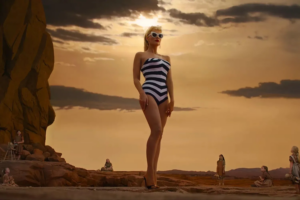
What happens next is instructive. Rather than simply putting aside the baby dolls in favour of the new adult form represented by Barbie, the girls embark on a savage work of destruction. They dismember the baby dolls, crush their skulls, grind them into the dirt. This is not a gentle awakening into something that is more ‘pure’ than what came before. From the outset, we are offered an image of humanity that is not one in which the divide between ‘good’ and ‘bad’, ‘dominant’ and submissive’, ‘peaceful’ and ‘violent’ is neatly allocated in favour of one sex or another. Rather, virtues and vices are shown to be evenly distributed across humanity in all its variety.
That the violent behaviour of the little girls is not an aberration is made clear later in the film when we are introduced to ‘Weird Barbie’. She lives on the margins of ‘Barbieland’ – both an outcast and a healer – whose status has been defined by her broken (imperfect) condition. The damage done to ‘Weird Barbie’ is, again, due to mistreatment by a subset of girls who treat Barbie in the same way depicted in the opening scenes. Then there is ‘Barbieland’ itself – a place of apparent perfection … unless you happen to be a ‘Ken’. Here, the ‘Patriarchy’ has been replaced by a ‘Matriarchy’ that is invested with all of the flaws of its male counterpart.
In Barbieland, Kens have no status of their own. Rather, they are mere cyphers – decorative extensions of the Barbies whom they adorn. For the most part, they are frustrated by, but ultimately accepting of, their status. The conceit of the film is an obvious one: Barbieland is the mirror image of the ‘real world,’ where patriarchy reigns supreme. Indeed, the Barbies (in all their brilliant variety) believe that their exemplary society has changed the real world for the better, liberating women and girls from all male oppression.
Alas, the real world is not so obliging – as is soon discovered when the two worlds intersect. There, Stereotypical Barbie (suffering from a bad case of flat feet) and Stereotypical Ken are exposed to the radically imperfect society that is the product of male domination. Much of what they find should be familiar to us. The film does a brilliant job of lampooning what we might take for granted. Even the character of male-dominated big business comes in for a delightful serve. The target is Mattel (which must be commended for its willingness to allow itself to be exposed to ridicule – even in fictional form).
Unfortunately, Ken (played by Ryan Gosling) learns all the wrong lessons. Infected by the ideology of Patriarchy (which he associates with male dominance and horse riding) he returns to Barbieland to ‘liberate’ the Kens. The contagion spreads – reversing the natural order; turning the ‘Barbies’ into female versions of the Kens of old.
Fortunately, all is eventually made right when Margot Robbie’s character, with a mother and daughter in tow, returns to save the day.

But the reason the film struck such a chord with me, is because it raises deeper questions about what it means to be human.
It is Stereotypical Barbie who finally liberates Stereotypical Ken by leading him to realise that his own value exists independent of any relationship to her. Having done so, Barbie then decides to abandon the life of a doll to become fully human. However, before being granted this wish by her creator (in reality, a talented designer and businesswoman of somewhat questionable integrity) she is first made to experience what the choice to be human entails. This requires Barbie to live through the whole gamut of emotions – all that comes from the delirious wonder of human life – as well as its terrors, tragedies and abiding disappointments.
This is where the film becomes profound.
How many of us consciously embrace our humanity – and all of the implications of doing so? How many of us wonder about what it takes to become fully human? Gerwig implies that far fewer of us do so than we might hope.
Instead, too many of us live the life of the dolls – no matter what world we live in. We are content to exist within the confines of a box; to not think or feel too deeply, to not have our lives become more complicated as when happens when the rules and conventions – the morality – of the crowd is called into question by our own wondering.
Don’t be put off by the marketing puffery; with or without the pink, this is a film worth seeing. Don’t believe the gripes of ‘anti-woke’, conservative commentators. They attack a phantom of their own imagining. This film is aware without being prescriptive. It is fair. It is clever. It is subtle. It is funny. It never takes itself too seriously. It is everything that the parody of ‘woke’ is not.
It is ultimately an invitation to engage in serious reflection about whether or not to be fully human – with all that entails. It is an invitation that Barbie accepts – and so should we.
Ethics in your inbox.
Get the latest inspiration, intelligence, events & more.
By signing up you agree to our privacy policy
You might be interested in…
Big thinker
Relationships
Big Thinker: Simone Weil
Opinion + Analysis
Relationships
Do we have to choose between being a good parent and good at our job?
Explainer
Relationships
Ethics Explainer: Agape
Opinion + Analysis
Relationships, Society + Culture









